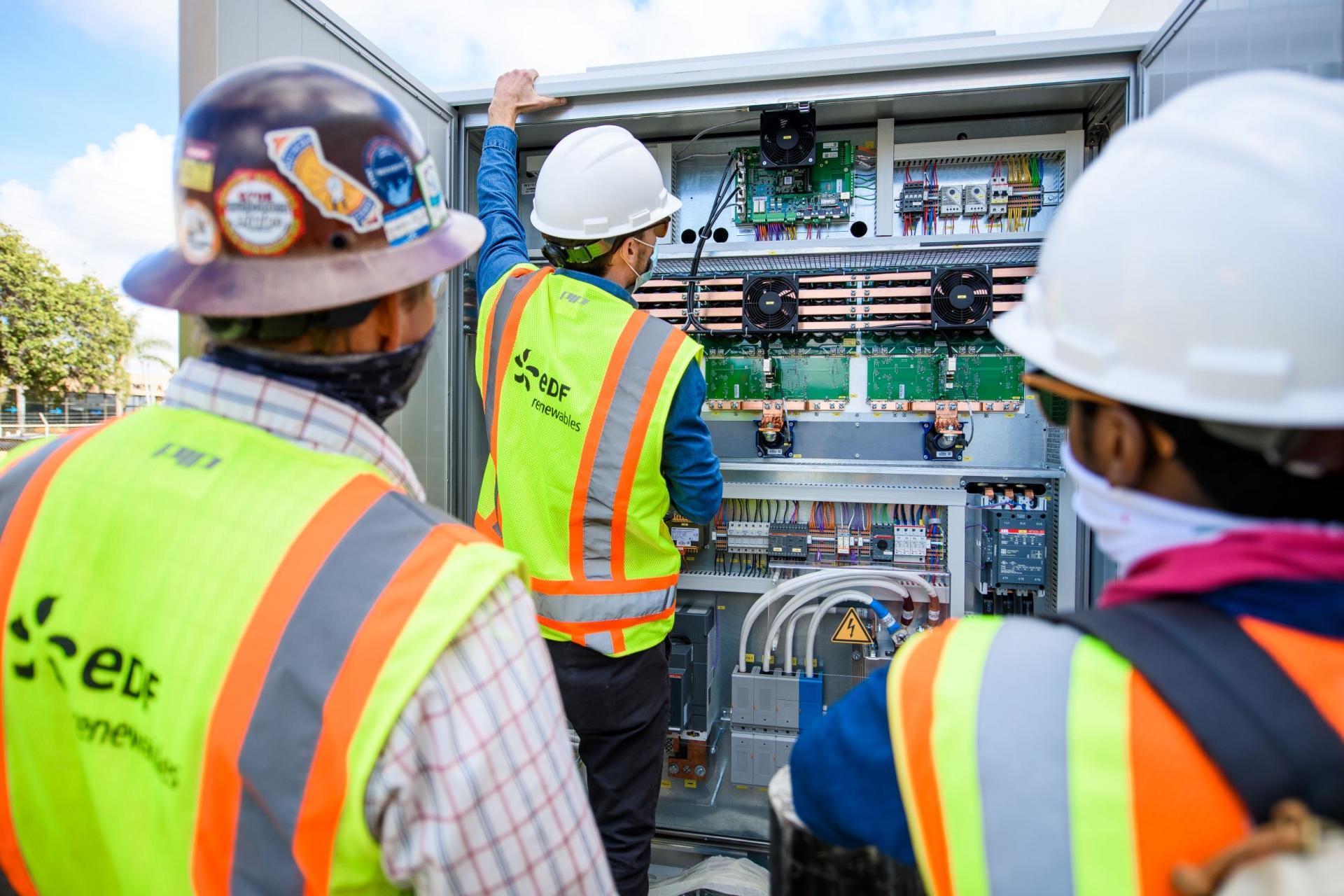Modern Infrastructure Means a Modern Electric Grid
Wednesday, Sep 22 2021

UPS energy storage project in California. Photo courtesy of Jamie Dickerson and EDF Renewables.
As the solar industry continues to grow and America moves toward a bright clean energy future, there’s a critical need to make sure our electric grid can keep up. Right now, we have an historic opportunity to uplift every American community by growing the clean energy economy, but we need bold infrastructure investments to support it with technology solutions and a 21st century electric grid.
Today’s grid was designed and built to accommodate old, outdated fossil fuel plants. These large central generators and the electric delivery system around them are now holding our nation back from reaching its clean energy potential. Coupled with worsening storms that have the ability to knock down transmission lines and shut off the power for weeks, we need to urgently invest in modern grid infrastructure for both distributed solar and grid-scale projects.
As power markets move toward renewables at a historic pace, access to high-voltage transmission lines continues to be important. These lines are responsible for moving the power from where the electricity is generated to households and businesses where it is used. Utility-scale solar projects can power tens of thousands of homes, but the limited availability of transmission lines continues to hinder large-scale solar deployment.
Large-scale solar and storage projects can also provide grid services, but need a modern, flexible grid that enables grid operators to make rapid adjustments to clean energy sources. With increased transmission access and the right communication technologies in place, large-scale solar and storage projects can be a valuable source of backup power and can even help us restart the grid when there’s a systemwide outage.
Solar can help us boost grid reliability and resilience, but we need to get these projects online first. Transmission tax credits, and increased authority for FERC to site transmission can help us build out this critical infrastructure and get solar and storage projects online faster.
We also need to maximize the benefits of local, on-site distributed solar and storage assets.
Our grid must be equipped with 21st century technology that enables two-way power flow and increases the dispatchability of solar and storage assets. This will be an essential part of distributed energy resource aggregation, which gathers excess energy from residential and commercial solar projects and makes it available to the grid when it’s needed most, helping to increase systemwide reliability and boost community resilience. We also need to prepare for the rapid electrification of our transportation sector, which will inevitably include more solar and storage projects of all sizes, but also newer and synergistic technologies like vehicle-to-grid.
All of these communication technologies will rely on the internet, underscoring the importance of increasing broadband accessibility to every community regardless of their resources or zip code. In addition, continued investments in power electronics will help to make solar the most reliable and secure energy resource on the grid.
A more modern grid also has the potential to create incredible economic prosperity across our nation, driving clean energy job creation and business growth in all 50 states. The Biden administration recently released a study that shows solar has the potential to power 40% of the nation’s electricity by 2035, but our members of Congress must take action today if we want to realize that vision.
Congress and the Biden administration must prioritize policies that modernize the grid and expand transmission in the infrastructure package. This is a once in a generation opportunity we cannot miss if we want to lead the world in clean energy and compete on a global scale.
It’s time for leaders in Washington to step up and put a down payment on our clean energy future.
Learn more about SEIA’s infrastructure policy priorities.